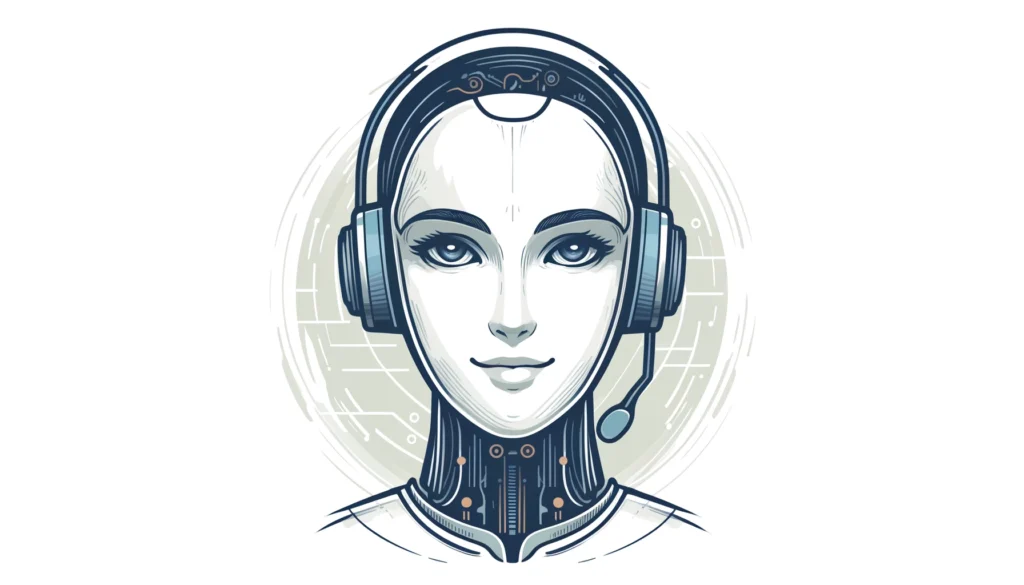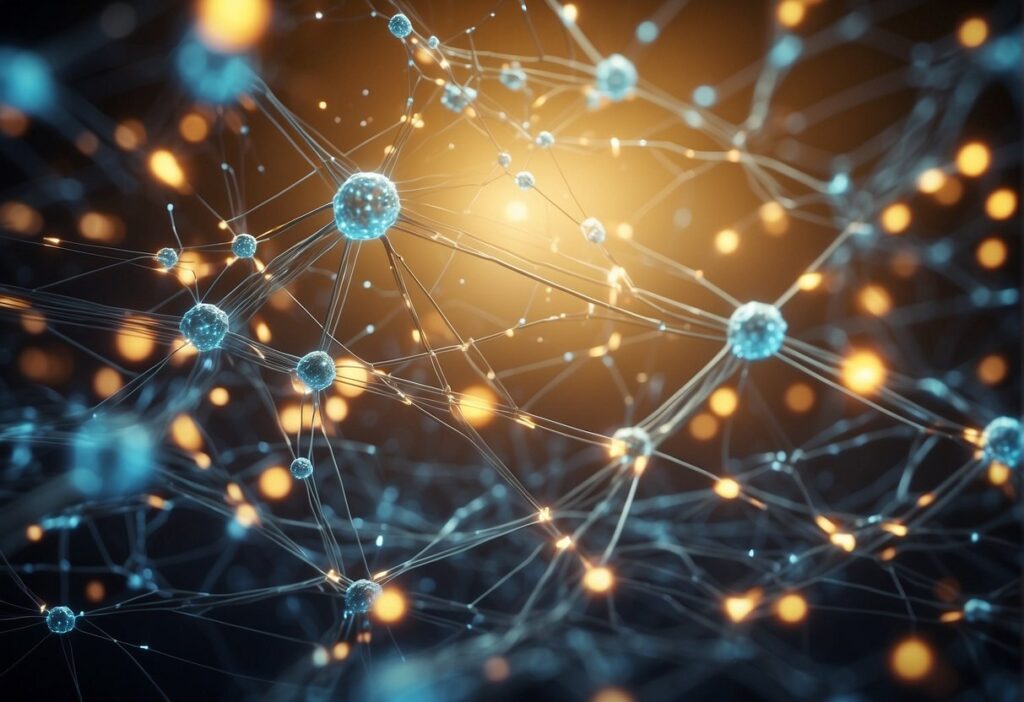Artificial Intelligence (AI) algorithms are at the heart of modern AI systems, enabling machines to learn from data, identify patterns, and make decisions with minimal human intervention. These algorithms range from simple decision tree classifiers to complex deep learning networks, each suitable for different types of tasks. They have infiltrated various domains, revolutionizing industries by providing solutions that can improve efficiency, accuracy, and bring about automation.
One of the fundamental categories of AI algorithms is supervised learning, where the machine learns to predict outcomes based on labeled training data. This method is widely used for classification and regression tasks. On the other hand, unsupervised learning algorithms identify hidden patterns or intrinsic structures in unlabeled data. Clustering and association are common techniques in this category. Reinforcement learning, another pivotal area, involves algorithms that learn to make a sequence of decisions by interacting with an environment to achieve a specific goal.
AI algorithms are also differentiated by their approach to learning and their application in real-world scenarios. For instance, machine learning encompasses algorithms that allow computers to learn from and make predictions based on data. In contrast, deep learning algorithms, a subset of machine learning, operate with artificial neural networks designed to recognize patterns and interpret sensory data. These algorithms are integral to the functioning of search engines, recommendation systems, and many other technologies that play a crucial role in day-to-day life.
Foundations of AI Algorithms
Artificial Intelligence (AI) algorithms form the core framework that enables machines to emulate human intelligence and execute complex operations autonomously. The foundation of these algorithms is rooted in a range of disciplines, including mathematics, computer science, and logic.
AI algorithms operate through a series of steps:
- Data Processing: They initially gather and process vast amounts of data.
- Pattern Recognition: Algorithms analyze this data to identify patterns and relationships.
- Learning: Over time, they learn from data patterns through techniques such as machine learning (ML) and deep learning.
- Decision Making: Utilizing this learning, AI can make informed decisions, often in real time.
| Fundamental Components | Description |
|---|---|
| Data | The raw input that algorithms use to learn and make decisions. |
| Models | Simplified representations of the real world that AI seeks to emulate. |
| Algorithms | Set instructions AI follows to process data and generate outputs. |
| Computational Techniques | Methods used to efficiently execute algorithms, like search and sort. |
Central to AI functionality are machine learning algorithms, which use statistical techniques to give computers the ability to “learn” from data. For instance, AI algorithms are crucial in applications ranging from voice recognition systems to autonomous driving.
Another cornerstone is deep learning, a subset of machine learning, which relies on neural networks. This is particularly effective for complex tasks like image and speech recognition, using layers of algorithms to mirror human cognitive functions.
Types of AI Algorithms
Artificial Intelligence (AI) algorithms are core components that enable systems to emulate cognitive functions. They are essential for pattern recognition, learning from data, and making decisions without human intervention.
Neural Networks
Neural Networks mimic the human brain’s interconnected neuron structure to process data in layers. They are adept at handling vast amounts of data and recognizing complex patterns, making them suitable for tasks such as image and speech recognition.
Decision Trees
Decision Trees are flowchart-like structures used to make decisions by splitting data into branches based on certain conditions. They are transparent, easy to understand and are particularly useful for classification and regression tasks.
Evolutionary Algorithms
Evolutionary Algorithms are inspired by the process of natural selection. They iteratively make small, random changes to potential solutions, selecting the best ones to evolve over time. This technique is effective for optimization problems where the solution space is highly complex.
Support Vector Machines
Support Vector Machines are powerful algorithms that classify data by finding the hyperplane that best separates different categories. They excel in high-dimensional spaces and with data that’s not linearly separable.
Bayesian Networks
Bayesian Networks are probabilistic models that represent a set of variables and their conditional dependencies through a directed acyclic graph. They are particularly useful for diagnostic and predictive analytics, enabling reasoning under uncertainty.
Neural Network Architectures
Neural network architectures are pivotal frameworks in the domain of artificial intelligence (AI). They define how AI algorithms process complex data, enabling them to identify patterns and make informed decisions.
Convolutional Neural Networks
Convolutional Neural Networks (CNNs) are specialized for processing data with a grid-like topology, such as images. They employ a mathematical operation called convolution which allows them to efficiently handle large amounts of data with numerous parameters. The CNN’s ability to autonomously learn spatial hierarchies of features, from low-level edges to high-level characteristics, makes them well-suited for image and video recognition tasks. The 4 Types of Neural Network Architecture offers a deeper look into the structure and functionality of CNNs.
Recurrent Neural Networks
Recurrent Neural Networks (RNNs) are designed to handle sequential data, such as time series or language. Each neuron in an RNN has a self-loop that allows it to retain a memory of past information, which is used to influence the current output. This architecture excels in tasks where context is essential, such as language translation or speech recognition. However, RNNs can struggle with long-term dependencies due to difficulties in learning across many time steps, an issue alleviated by more advanced versions like LSTM (Long Short-Term Memory) networks.
Generative Adversarial Networks
Generative Adversarial Networks (GANs) consist of two competing neural networks: a generator and a discriminator. The generator creates data that is indistinguishable from real-world data, while the discriminator learns to differentiate between the two. This adversarial process results in the generator producing highly realistic data. GANs have been successful in applications like photo-realistic image generation, super-resolution imaging, and even drug discovery. The dynamic between these two networks propels advancements in creating synthetic, yet plausible, data. The article Neural Network Architectures delves into various use cases and the evolution of GANs.
AI Algorithm Training
AI algorithms are primed to perform tasks by learning from data. The quality of their performance is directly linked to the training they undergo, which depends on the type of learning they are subjected to. Here, one will explore the different types of learning that underpin the functionality of AI algorithms.
Supervised Learning
In supervised learning, AI algorithms are trained on a labeled dataset which serves as an instructive guide. The algorithm makes predictions or decisions, and its performance is gauged based on its accuracy when compared against the known outcomes. For instance, GeeksforGeeks talks about how these algorithms simulate human intelligence by applying learned knowledge to new data.
- Types of Problems:
- Classification
- Regression
- Examples:
- Spam email detection
- House price predictions
Unsupervised Learning
Unsupervised learning involves algorithms that are trained using data without pre-labeled answers. They learn to identify complex patterns and relationships within the data. According to Tableau, the key difference lies in how data is acquired and handled, which enables the algorithm to discover data structures autonomously.
- Common Methods:
- Clustering
- Association
- Use Cases:
- Customer segmentation
- Market basket analysis
Reinforcement Learning
Reinforcement learning is characterized by training algorithms through a system of rewards and penalties. These algorithms learn to make a sequence of decisions by interacting with a dynamic environment in pursuit of a certain objective. Coursera offers courses explaining how AI algorithms are improved by systematically refining the decisions based on feedback.
- Components:
- Agent: The decision-maker
- Environment: Where the agent operates
- Reward System: For evaluating actions
- Applications:
- Game AI
- Autonomous vehicles
AI Platforms and Tools
AI platforms and tools are integral for developing intelligent systems. They vary significantly in terms of ease of use, flexibility, performance, and the specific problems they solve. Knowing the key features of the most prominent tools helps developers choose the most suitable platform for their project.
TensorFlow
TensorFlow is a comprehensive, flexible ecosystem of tools, libraries, and resources that provide developers with the means to build and deploy machine learning and deep learning models. It is renowned for its scalability and its ability to facilitate complex computations. Developed by Google, TensorFlow supports a variety of tasks and is widely used for research and production. Its ability to run on multiple CPUs and GPUs is a significant advantage for training and inference on large-scale models.
PyTorch
Developed by Facebook’s AI Research lab, PyTorch excels with its dynamic computation graph called Autograd. It is known for its user-friendly front-end, ease of debugging, and seamless transition from research prototyping to production deployment. PyTorch has gained popularity for its simplicity and intuitive handling of tensors, although it offers a slightly smaller ecosystem compared to TensorFlow.
Scikit-learn
Scikit-learn is another valuable tool designed for data mining and data analysis. Built on NumPy, SciPy, and matplotlib, it is particularly known for its strength in classical machine learning rather than deep learning. Its simplicity, accessibility, and comprehensive range of algorithms make Scikit-learn ideal for beginners and for tasks that require quick and efficient implementations of common algorithms.
Evaluating AI Algorithm Performance
Evaluating the performance of AI algorithms is an essential step in developing reliable and effective AI systems. This evaluation involves understanding accuracy metrics, addressing potential issues of overfitting and underfitting, and implementing robust validation techniques.
Accuracy Metrics
Accuracy metrics quantify an algorithm’s performance by comparing its predictions against true outcomes. Common metrics include precision, recall, and the F1 score. Precision measures the ratio of true positive predictions to all positive predictions made, while recall, also known as sensitivity, assesses the ratio of true positive predictions to all actual positives. The F1 score provides a balance between precision and recall, delivering a single metric for situations where both are important.
- Precision:
True Positives / (True Positives + False Positives) - Recall:
True Positives / (True Positives + False Negatives) - F1 Score:
2 * (Precision * Recall) / (Precision + Recall)
For regression tasks, other metrics such as mean squared error (MSE) or mean absolute error (MAE) are used to convey the average disparity between the predicted and actual values.
Overfitting and Underfitting
Overfitting occurs when an AI algorithm learns the training data too well, including the noise and outliers, resulting in poor generalization to new data. Conversely, underfitting describes a scenario where the algorithm does not capture the underlying trend of the data, showing both poor performance on the training data and an inability to generalize.
Strategies to combat overfitting include:
- Reducing model complexity
- Increasing training data variety
- Implementing regularization techniques
To prevent underfitting, one might:
- Increase model complexity
- Optimize feature selection
- Ensure the quality of input data
Validation Techniques
Validation techniques are crucial for assessing the generalizability of AI algorithms to unseen data. Cross-validation involves partitioning the data into subsets, training the algorithm on some partitions, and testing it on the others. This is iterated several times to reduce variability in the estimation of model performance. Noteworthy is the k-fold cross-validation method, where the data is divided into k subsets and the holdout method is repeated k times.
Another method is the train/validation/test split, which segments the data into distinct sets used for training, fine-tuning model parameters, and final performance assessment, respectively.
- Cross-validation: Ensures evaluation robustness across different data subsets
- Train/validation/test split: Provides clear demarcation for different stages of model assessment
Application-Specific AI
In the realm of AI, application-specific algorithms are tailored to tackle complex challenges in specialised domains. These algorithms are designed to optimize performance, accuracy, and efficiency in specific tasks.
Natural Language Processing (NLP)
Natural Language Processing algorithms enable machines to understand and interpret human language. One such application is sentiment analysis, where algorithms assess the sentiment behind texts, crucial for brand monitoring. Another application is machine translation, such as those used by online translators, allowing for instant cross-lingual communication.
Computer Vision
Computer Vision algorithms process and interpret visual data from the world. They power facial recognition systems, integral for security and authentication purposes. Autonomous vehicles rely on these algorithms for object detection to navigate safely through their environments.
Robotic Process Automation (RPA)
Robotic Process Automation employs algorithms to automate routine and repetitive tasks. In sectors like banking, RPA algorithms assist in data validation and entry, streamlining operations. Additionally, customer service benefits from chatbots, which handle inquiries through automated yet interactive responses.
Ethical Considerations and AI Transparency
Ethical considerations in AI involve ensuring technology respects values such as privacy, fairness, and accountability. Transparency in AI systems is paramount, as it allows users to understand, trust, and effectively manage AI.
In discussing explainability, one finds that it supports the definition of transparency requirements, affecting software quality. An individual is more inclined to seek explanations in adverse situations than to comprehend the inner workings of AI systems.
A commitment to ethical AI involves adherence to standards and possibly seeking certifications to validate transparency. This compliance builds trust with both users and regulators.
Key ethical principles in AI:
- Fairness: AI should provide unbiased outputs, giving equal opportunity regardless of inherent biases in data.
- Accountability: Developers and companies must be responsible for AI behavior, ensuring it aligns with societal norms.
Scientists recognize the importance of integrating these principles in AI development, focusing on regulatory considerations for commercial algorithms. This integration is embodied in concepts like algorithmic fairness.
One also finds principles such as ethical considerations, fairness, and accountability covered in educational programs addressing AI. Learning to identify and mitigate bias, practitioners aim to ensure inclusivity within AI systems.
To facilitate these ethical imperatives, one encounters the need for strategies that interpret and explain AI decisions to balance accuracy with transparency, while also addressing the necessity for inclusive algorithm designs.
Frequently Asked Questions
This section addresses some of the pressing questions about artificial intelligence algorithms, shedding light on their usage, types, implementation, and development.
What are the most commonly used algorithms in artificial intelligence?
The most commonly used AI algorithms include neural networks for deep learning, decision trees for classification, support vector machines for data analysis, and evolutionary algorithms for optimization. These algorithms form the backbone of many AI applications.
Can you provide examples of how AI algorithms are applied in healthcare?
In healthcare, AI algorithms assist in diagnosing diseases, predicting patient outcomes, and personalizing medicine. For example, they can analyze medical images to detect cancerous cells or recommend treatment plans based on a patient’s genetic profile.
How do machine learning algorithms differ from traditional AI algorithms?
Machine learning algorithms, a subset of AI, learn from data patterns and make predictions, while traditional algorithms follow predefined rules and logic. The adaptive nature of machine learning allows for continuous improvement with new data.
What are the key characteristics of the four types of AI systems?
The four types of AI systems include reactive machines, limited memory, theory of mind, and self-aware systems. Each type represents a different level of sophistication, ranging from basic automation (reactive machines) to advanced systems with self-awareness and the ability to understand others’ mental states (self-aware systems).
Which programming languages are most suitable for implementing AI algorithms?
Languages such as Python, R, and Java are commonly used for AI algorithm implementation due to their extensive libraries and frameworks that provide tools for machine learning and AI. Python, in particular, is favored for its simplicity and readability.
How are new AI algorithms developed and by whom?
New AI algorithms are typically developed by researchers and data scientists in academia and industry. They often involve interdisciplinary collaboration and draw upon advances in computer science, mathematics, and domain-specific knowledge to push the boundaries of what AI can achieve.











